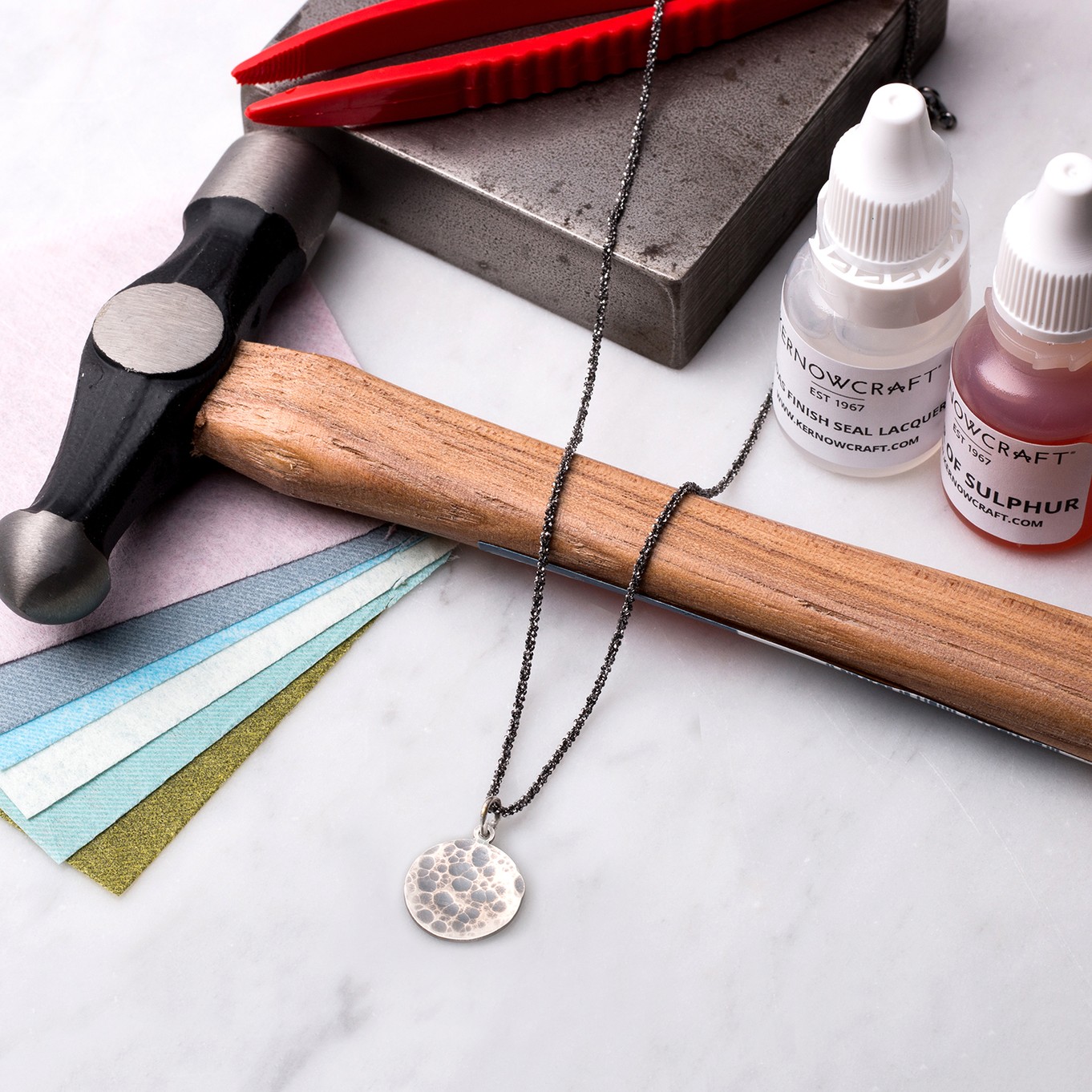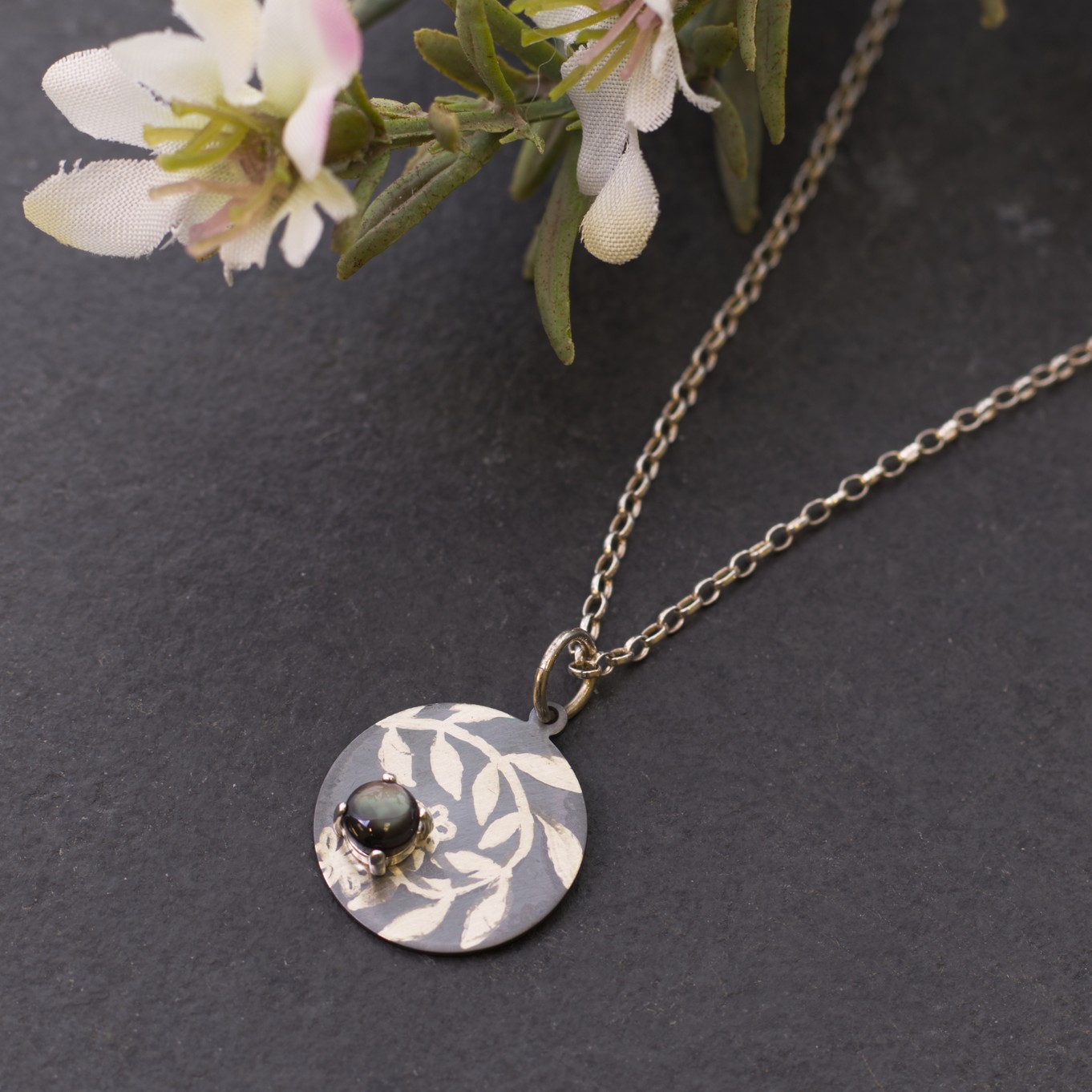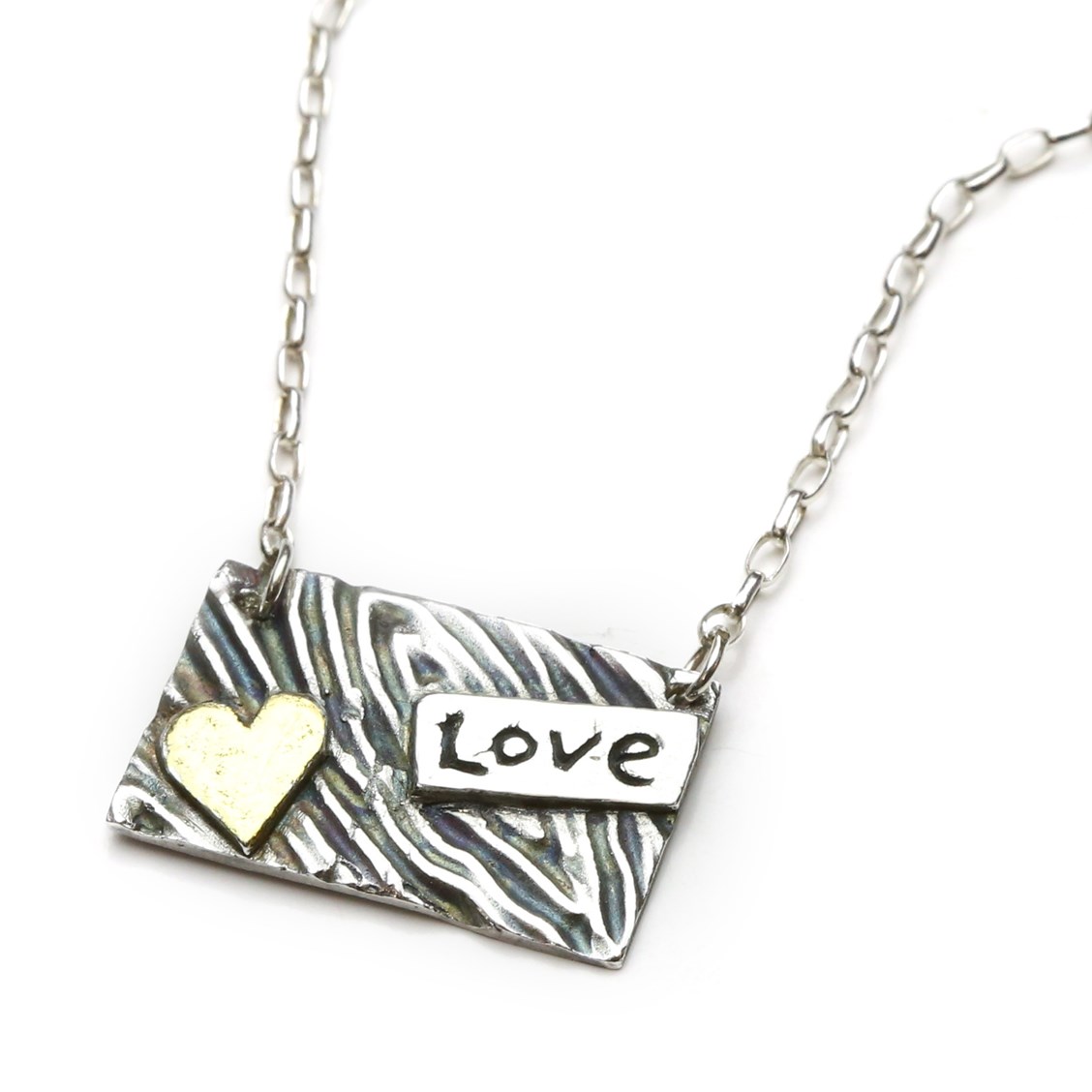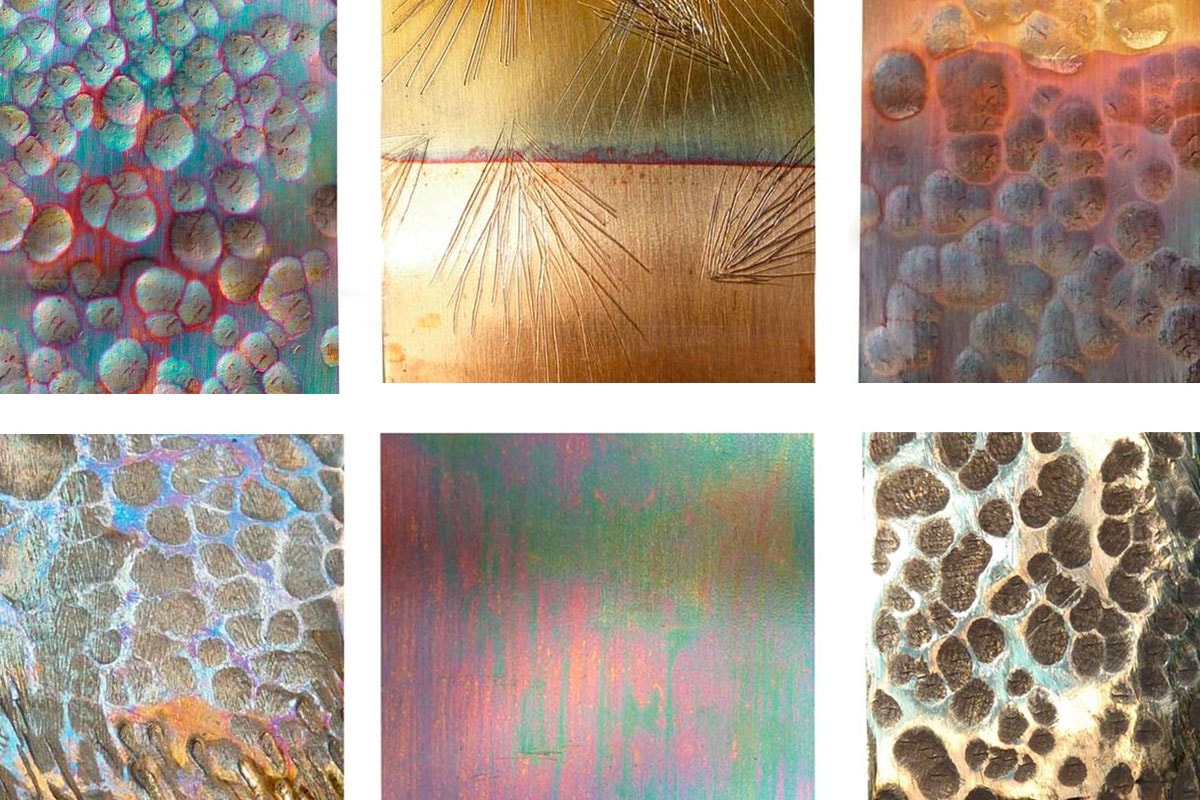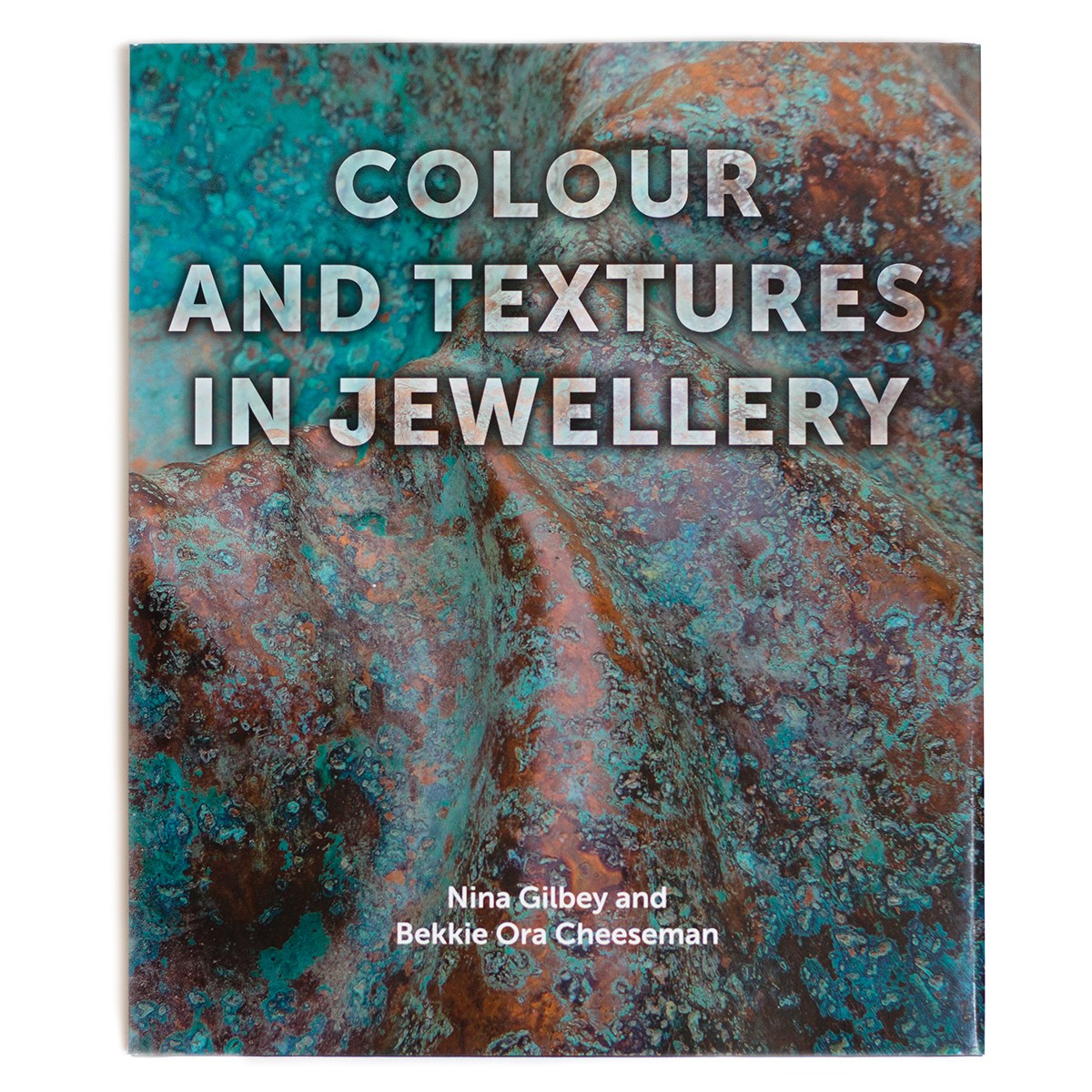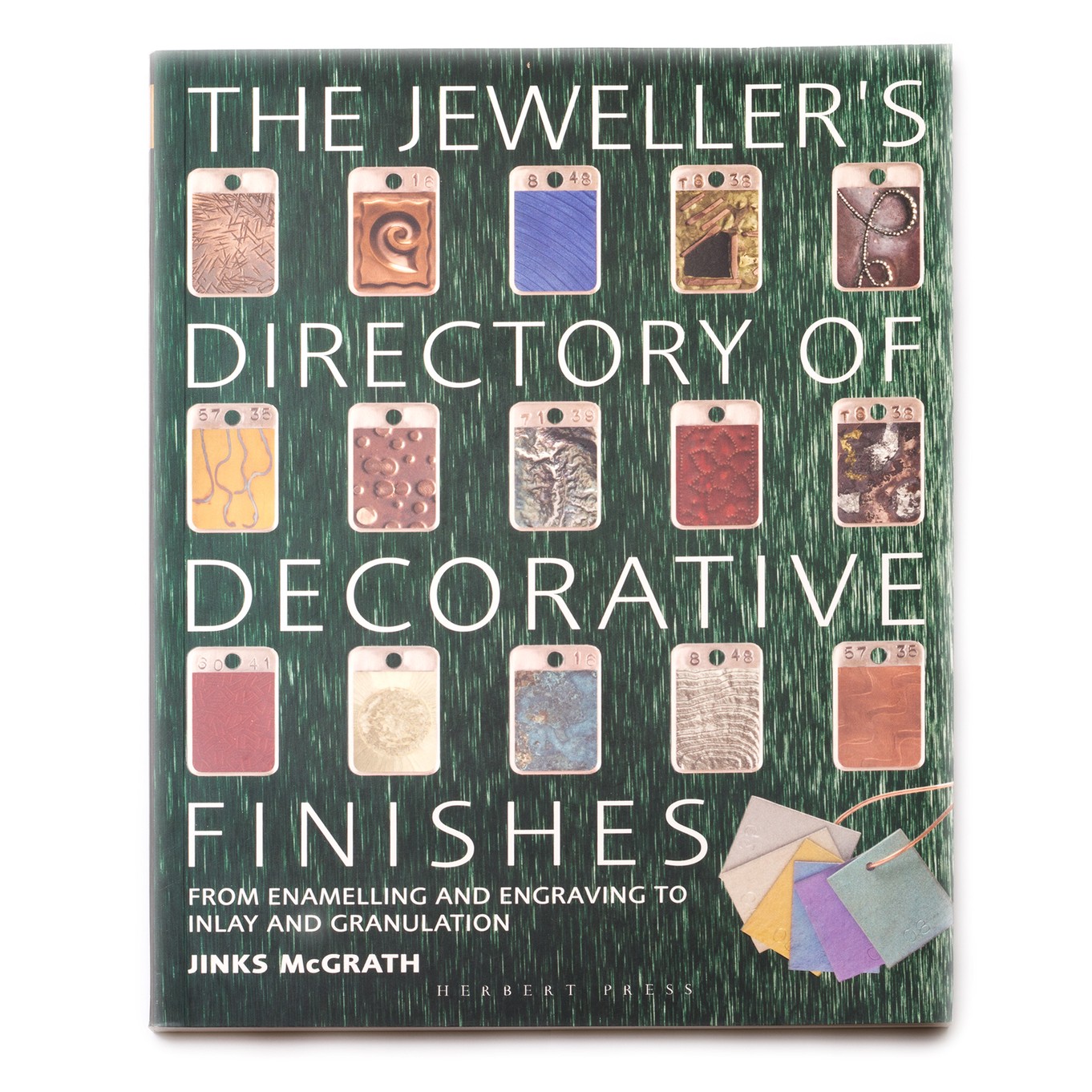VIDEO: How To Create Patina With Liver Of Sulphur
What Is Liver Of Sulphur?
Liver of sulphur is used to achieve an antique look or a patina on metal which can be black or a range of colours. The silver reacts chemically with the Sulphur, which changes its colour as it oxidises, until it eventually turns black. This is a very similar process to when Silver tarnishes but speeded up. It is excellent for use on textured surfaces, as it enhances the difference between the raised and the lowered parts of the texture and makes subtle patterns more visible.
It can be used on copper, bronze, sterling silver, metal clay and after a little surface preparation work, brass and gold too. On this page we give instructions, tips and advice on using liver of sulphur and how you can use it to create black and coloured patina.
After experimenting with this amazing process ourselves we were really happy with the results! It's a great way to create completely unique and intriguing designs.
Notes Before You Start...
In all cases, your jewellery piece should be finished (brushed, burnished or polished) and clean before applying the liver of sulphur. If you think there may be traces of polish or grease on your piece, mix a teaspoon of bicarbonate of soda with a few drops of water into a paste and clean it with this.
Wear rubber gloves when using liver of sulphur to protect your hands (mainly from the smell!).
You can use stainless steel or plastic tweezers to insert and remove your items from the liver of sulphur. Always use it diluted – mix it in a stainless steel, plastic, ceramic or glass container.
How To Achieve Black Patina
Step 1
Drop about 10 drops of liver of sulphur into about half a mug of hot (not boiling) water.
Step 2
Swirl the liquid around with plastic tweezers or something similar.
Step 3
If your liver of sulphur is freshly mixed, it should turn black in a matter of seconds. If your mixture is a week or so old, it will take longer. If you want to speed up the process further, heat your piece with a hairdryer or hot water before dipping.
Step 4
Rinse the piece well in clean water when the desired depth of colour is achieved.
How To Achieve Different Colours With Liver Of Sulphur
You can obtain a beautiful range of colours with Liver of sulphur – gold, copper, purple, blue and blue-grey before the metal turns black.
Use the same amount of liver of sulphur but mix it with cold water and don’t heat your piece first. This will slow down the process so you can stop when you achieve the desired colour.
Dip and remove the piece quickly and rinse with cold water immediately.
Repeat this process until you are happy with the colour.
Experiment with the temperature of the water, the amount of liver of sulphur or by adding a drop of household ammonia or some salt which can give you more vibrant colours.
Applying Liver Of Sulphur With A Brush
Liver of sulphur can be applied with a brush if you only want to oxidise certain parts of the piece. Paint it onto the parts you want and try layering it by applying it several times or, for a more random effect or varying colours, let it splash or drip (carefully) from the brush.
After Applying Liver Of Sulphur
When you have achieved the colour you want you can gently polish your design using a jewellery cloth to remove the patina from certain areas and bring out lovely silver highlights. It is important to be careful when polishing your design as it is possible to polish off the patina completely, although the darker the colour, the more difficult it is to remove.
To 'seal in' and protect your design use Renaissance wax or Midas lacquer for longer lasting protection.
After something more visual? Watch our jewellery making tutorial on liver of sulphur below...
Try A Patina Resist Pattern
Materials Needed:
- Liver Of Sulphur
- Metal sheet or a disc of your choice
- Permanent marker pen
- Acetone (or nail polish remover with acetone)
- Midas lacquer or Renaissance wax
Steps:
- Prepare Your Metal: Select a piece of metal for your design. Clean and polish it thoroughly to ensure the surface is ready for your artwork.
- Create Your Design: Use the permanent marker pen to draw or write your desired design on the metal. Let your creativity flow - this is your chance to make something truly unique.
- Apply the Patina: Follow the patination process steps (mentioned above) to colour the metal. Be patient and adjust the process until you achieve the desired shade and effect.
- Remove the Marker: Once you're satisfied with the patina, use acetone or nail polish remover with acetone to gently remove the permanent marker. This will reveal your design beneath the patina.
- Finish with Lacquer: Apply Midas lacquer to seal and protect your artwork. This will enhance the durability and appearance of your design.
Enjoy your custom-designed metal piece!
Watch Us Experimenting With Resist Patina
What if you don't like the results?
If you are completely unhappy with the results, you can remove the patina by heating your piece with a torch or kiln (if your piece is PMC, heat until it glows orange and then cools to a white colour and re-polish; if it is sterling silver you may need to pickle it after heating to remove any fire stain). You can now start the process all over again if you wish.
Take a look at some of our examples, experimenting with liver of sulphur below
Kernowcraft's Liver Of Sulphur Is Non Toxic
Our liver of sulphur is non-toxic. Surprisingly, our solution is sold in Japan as a traditional bathing solution similar to the sulphurised hot springs that occur naturally. Liver of sulphur is a name that covers a poorly defined mixture of potassium sulfides also known as sulphurated potash. Some of the versions available elsewhere are quite toxic and irritating with a strong ammonia type smell. Our liquid has creates the same wonderful patina from the bright colours through to a deep black but without the toxic effects of many solutions. You may have heard that liver of sulphur has a strong eggy smell, so we recommend using with a window open!
Watch How Cyrilyn Uses Liver Of Sulphur To Make Stamped Jewellery Pop!
Catch up with Cyrilyn's Top Tip Tuesday series here for more tips and demos
Watch Kim's Tutorial On Using Liver Of Sulphur
This video is part of our 12 Months Of Metal tutorial series with Kim Thomson!
Watch Estona's Guest Tutorial Featuring Patina
Bregje joins us to transform our rose cut garnet cabochons into sparkling earstuds! This project combines a whole range of jewellery making techniques, using mixed metals of silver and gold, finished with patina for an eye-catching result. Head over to our tutorial page for more information.
How To Protect Your Patina
Shop Renaissance Wax
This popular conservation wax polish can be used to preserve your patina effectively. Simply apply a thin layer, rub out to a full lustre, revealing a clear film and avoiding any further effect to the surface. It creates the perfect protection of your patina, and avoids tarnishing and oxidisation. It can also be used to finish polymer clay, wood and ceramics.
Shop Midas Finish Seal Lacquer
Midas finish is another way to protect patinas and is also a transparent solution, which works at protecting your jewellery. Use Midas to avoid tarnishing on metals such as brass and copper, while also maintaining patinas.
Shop Liver Of Sulphur
For any further advice regarding the contents on this page or for any other general jewellery making enquires, please feel free to get in touch, we would love to hear from you. Share your makes with us on social media! We would love to see your creations and experiments using Liver of Sulphur - don't forget to tag us!
Further Reading On Patination & Decorative Finishes
Metal Patination Techniques For Jewelers And Metalsmiths
Aimed for all skill levels, this book contains more than 300 coloration techniques on a variety on metals. It's an inspirational resource as well as a practical guide.
The Workbench Guide To Jewelry Techniques
This is a fully illustrated step by step guide for a range of techniques, as well as basic techniques such as piercing and polishing, it also includes guides on patinas, etching, casting, granulation, reticulation and more.
Colour And Textures In Jewellery
This book covers a range of techniques and materials which can be used to bring excitement, meaning and interest to your designs. It encourages you to experiment, make samples, bend the rules and see what the results are.
The Jeweller’s Directory Of Decorative Finishes
A thoroughly inspiring and indispensable reference book for anyone working with metals. Your complete guide to tools, materials and techniques to create a wide range of spectacular effects!
Also in this section:
- Guide To Sanding & Polishing For Jewellery Making
- Hand Polishing Your Jewellery With Polishing Papers
- A Guide To Texturing Metals For Jewellery Making
- Top Tools For Making Textures On Metal
- Beginner's Guide To Chasing & Repoussé
- How To Make Easy Textured Earrings
- How To Make A Hammered Copper & Silver Heart Pendant
- How To Make A Textured Cuff Bracelet
- How To Make A Metal Leaf Decoration
- How To Use Doming Block & Punches For Jewellery Making
- How To Make Domed Metal Earrings With A Doming Block
- How To Engrave Your Drawings On Art Clay Copper
- Textured Washer Bracelet Tutorial With Guest Jeweller Laura Grey
- Barrelling Machine For Polishing Metal - Everything You Need To Know
- Tumbling Machine For Polishing Stones and Glass- Everything You Need To Know
- Polishing Jewellery Q&A With Stephen M Goldsmith
- Town Talk Products For Cleaning & Caring For Jewellery
- Creating A Resin Bird Pendant With Designer Sarah Hoare
- VIDEO: How To Create Patina With Liver Of Sulphur
- 2 Ways To Apply Liver Of Sulphur
- VIDEO: How To Use Silver Plating Solution
- How To Clean & Prevent Tarnished Jewellery
- Why You Need Anti Tarnish Paper Strips
- How To Use Midas Finish Seal Lacquer
- How To Use Renaissance Wax To Prevent Tarnished Jewellery
- VIDEO: Working With Crinkle Metal Sheet
- A Guide To Using Mokume Gane Metal For Jewellery Making
HAVE A QUESTION?
If you have any questions, feel free to get in touch with our friendly team who will be more than happy to give you advice over email or on the phone.
You can learn more and find inspiration by visiting our Jewellery Making Tutorials, Jewellery Making Kits and YouTube Channel. Don't forget to follow us on social media and tag us in your designs on Instagram & Facebook, we would love to see!

